Intelligent Transportation Systems
American urbanites are showing little inclination to give up their cars in favor of alternative modes of transit. Nonetheless, a revolution in communication technologies is changing our transportation landscape. Traffic congestion on our highways continues to increase, and improving safety is always a priority, so to address these concerns, technological solutions known as Intelligent Transportation Systems (ITS) are being rapidly developed.
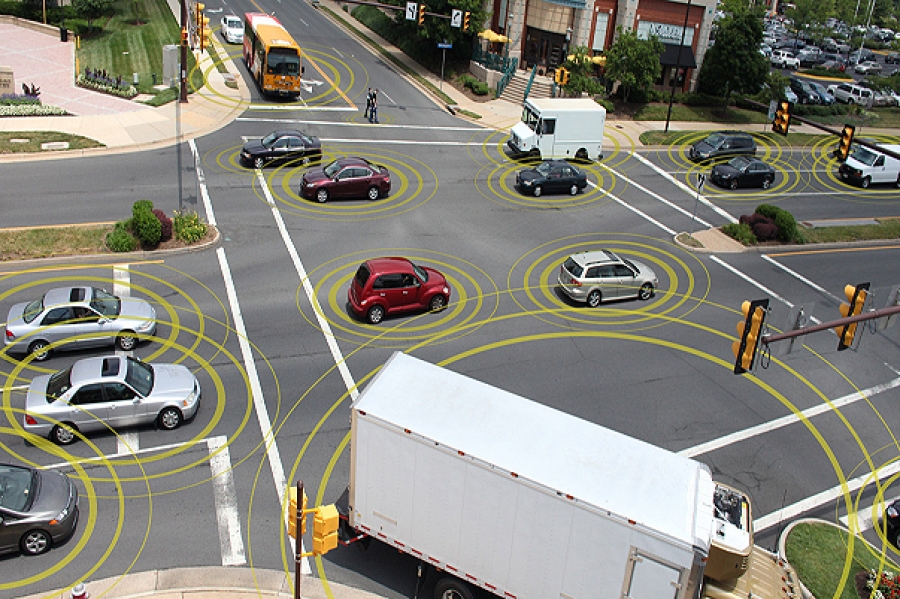
Bayne Smith, P.E. and Director of ITS for URS Corporation, explains, “The issue with building rail lines, or new highways – really any form of new infrastructure – is that they are expensive to build, and only have a 20 to 40 year life cycle. On top of that there are always environmental and other challenges. So we are applying technology to the existing roadways to allow more efficiency.”
“What we think of as ITS could be considered to have started with improving traffic signals in the 80s and 90s,” says Smith. “At that time there was an effort to add intelligence by timing the lights.” Other relatively recent technological improvements are already familiar sights. For example, variable message boards – including the portable speed limit signs that give feedback about how fast a car is currently driving – have come into common use. Electronic toll payment systems expedite clearance through toll gates, especially at peak travel hours. And, of course, GPS devices were quickly adopted by motorists as a welcome replacement for the paper roadmap. All of these technologies provide the driver with real-time updates and intervention.
The Evolution of ITS
Over the past few decades, departments of transportation (DOTs) have been actively installing sensors and other data collection devices along roadways. Transportation Management Centers (TMCs) have been tasked with managing this data and acting as information clearinghouses. “Historically, the DOTs have been the ones to put in sensors," states Smith. "They are expensive to install and operate, but previously, there were no alternatives.” Over the past few years, this has begun to change. Along with a shift in the technologies being explored, there has been a shift in the delivery model.
One of the first things that was attempted was the anonymous tracking of mobile phones. Using the signals that phones regularly transmit to towers, data points can be collected, and, in theory, traffic flow can be calculated. In practice, getting accurate data points has proved to be complicated. “There has been limited success with the phone tracking approach,” concludes Smith. Other options are looking more promising. “INRIX [a leading provider of traffic information] has come up with ways to fuse data from different sources, for example, GPS information collected by trucking companies. We are also seeing success with the tracking of Bluetooth devices. As we move along, we may see less and less [information] infrastructure being built by DOTs. There is a move to the private sector, where a business model is in place.”
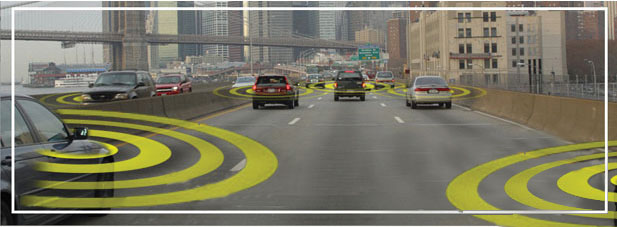
Increasingly, car manufacturers are experimenting with intelligent cars, equipping them with wireless and GPS devices that can communicate both with other cars and with stationary systems along the roadway. Within the past year, Ford has pushed forward with its research in vehicle-to-vehicle communication as well as unveiling a prototype of an intelligent vehicle; Toyota has enhanced its onboard navigation system with intelligent features.
Ongoing federal efforts at ITS occur under the umbrella of the U.S. DOT’s Research and Innovative Technology Administration (RITA). Here, too, the biggest growth area is vehicle-to-vehicle communication, although more established systems – as well as more exploratory ones – continue to be researched.
Perhaps the biggest obstacle at this point is the logistical one of getting all of the players, from manufacturers to traffic managers, to share the same platform. Once that happens and processes are streamlined, a linked system of communication will change the definition of driving.
“I have a phone app that I look at every morning before I leave the house... it analyzes traffic data and can tell me which route to take.” Bayne Smith, P.E. and Director of ITS for URS Corporation
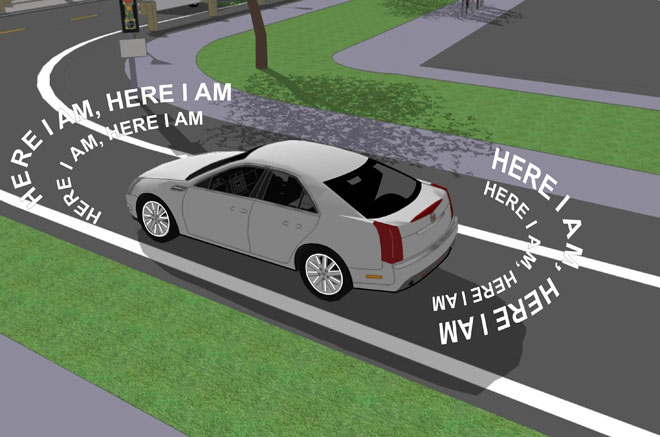
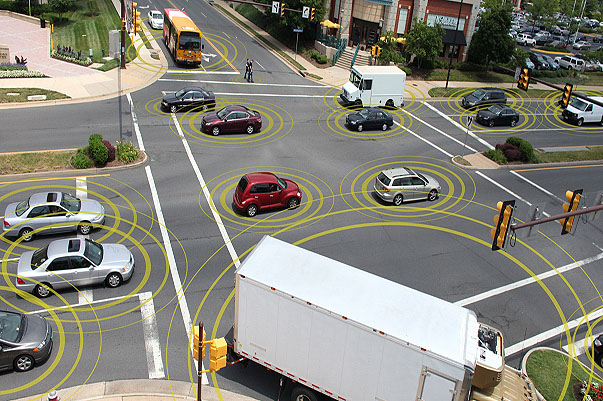
From Real Time to Predictive Data
Intelligent technology seems to be on the cusp of another leap forward. There is currently a move to go beyond real-time updates and toward analytic data methodologies. Smith points out that this will enable us to receive predictive information: “Already I have a phone app that I look at every morning before I leave the house. This app analyzes traffic data and can tell me which route to take. Similar tools are being built which can compare real time data to historic data. Companies are launching predictive tools that TMCs can use.” The future of driving, Smith believes, is likely to involve fewer and fewer signs, and more and more targeted messaging that will be received directly by a vehicle.
The Future of Driving
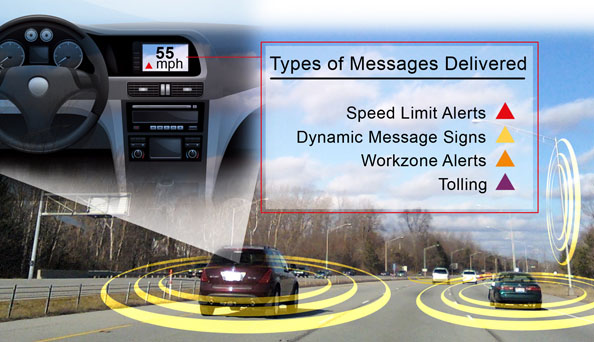
The development of some of these intelligent applications has touched off fears about just how much control ITS may eventually wield. (Will intelligent speed adaptation ever be able to actively intervene to reduce a car’s speed? Will data collected from a car’s GPS system be used to calculate road usage fees or “congestion pricing"?) However, so far the applications have been overwhelmingly beneficial. “We have seen 50 years of falling traffic fatalities, even though people are driving more," says Smith. "This is because the technology is better; it is responsible for the improvement.” Recent research suggests that as many as 80% of roadway accidents could be eliminated through the use of intelligent vehicles. “The government shows sensitivity to making the data collection anonymous,” Smith says.
Beyond the limitations imposed by political gridlock, and by the expense and coordination of effort that is required for building new infrastructure, sometimes there is simply not space in our crowded cities to physically expand. “So, we have to use technology to optimize our roadways. The real growth of TMS has come from need,” says Smith. “Accident statistics show that for every minute an accident is sitting on a roadway, it takes traffic eight minutes to recover. So we need to reduce this number.”
Ultimately, technological developments may enable us to have the best of both worlds. Without giving up the autonomy of driving our cars, we will still be able to benefit from the safeguards and oversight of a coordinated, even intelligent, transit system.

Kristin Dispenza
Kristin graduated from The Ohio State University in 1988 with a B.S. in architecture and a minor in English literature. Afterward, she moved to Seattle, Washington, and began to work as a freelance design journalist, having regular assignments with Seattle’s Daily Journal of Commerce.
After returning to Ohio in 1995, her freelance activities expanded to include writing for trade publications and websites, as well as other forms of electronic media. In 2011, Kristin became the managing editor for Buildipedia.com.
Kristin has been a features writer for Buildipedia.com since January 2010. Some of her articles include:

